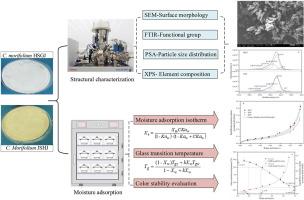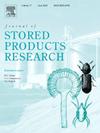Evaluation of surface structure, water sorption properties, water plasticizing effect, and color stability of dried chrysanthemums
Abstract
The storage stability of two varieties of chrysanthemum (Chrysanthemum morifolium Ramat. cv. HSGJ and C. morifolium Ramat. cv. JSHJ)was evaluated in this study through an analysis of their water binding behavior. This involved examining the surface structure of the powdered dried chrysanthemums, studying the water sorption characteristics, and quantifying the water plasticizing effect. In comparison to JSHJ, powdered HSGJ had a smaller particle size and more hydrophilic groups on its surface. Additionally, it exhibited significantly higher characteristic values of adsorbed water, excluding the number of adsorbed monolayers (Nam). The sorption of water by the powdered chrysanthemums conformed to a type II isotherm. The Guggenheim–Anderson–deBoer (GAB) model was trustworthy for predicting water sorption within the range of aw from 0.112 to 0.907 and temperatures between 20 and 40 °C. The exothermic interactions between water molecules and the primary sorption sites of the powdered samples became more powerful when the temperature decreased. Powdered chrysanthemums can be preserved at 30 °C if the humidity is below 0.0852 g/g for HSGJ and 0.0766 g/g (d.b) for JSHJ. The color changes of powdered samples were not significantly affected when stored in a glassy state. This study is significant for identifying the drying endpoint, predicting shelf life, and choosing suitable packaging materials for dried chrysanthemums.

| 公司名称 | 产品信息 | 采购帮参考价格 |
|---|

 求助内容:
求助内容: 应助结果提醒方式:
应助结果提醒方式:


